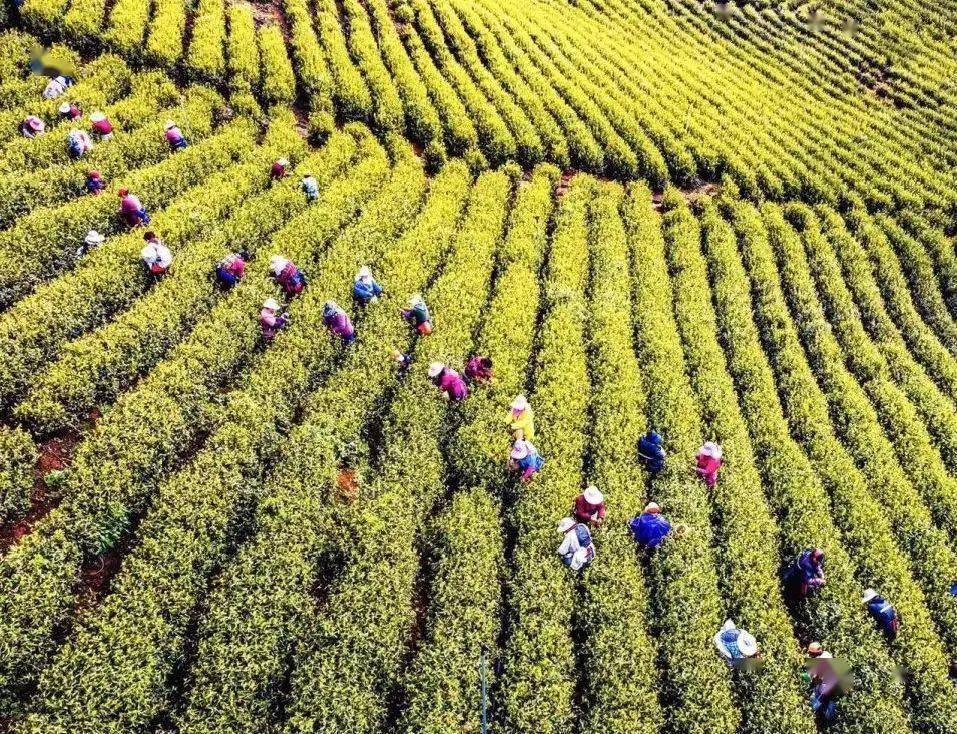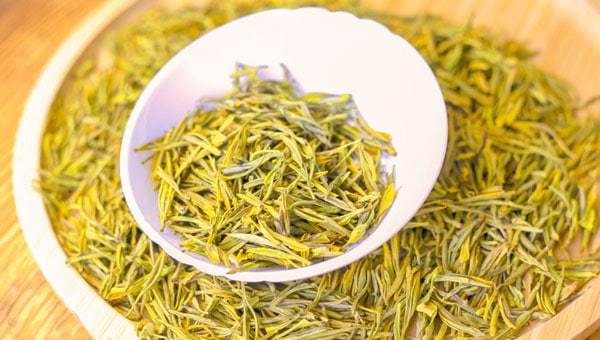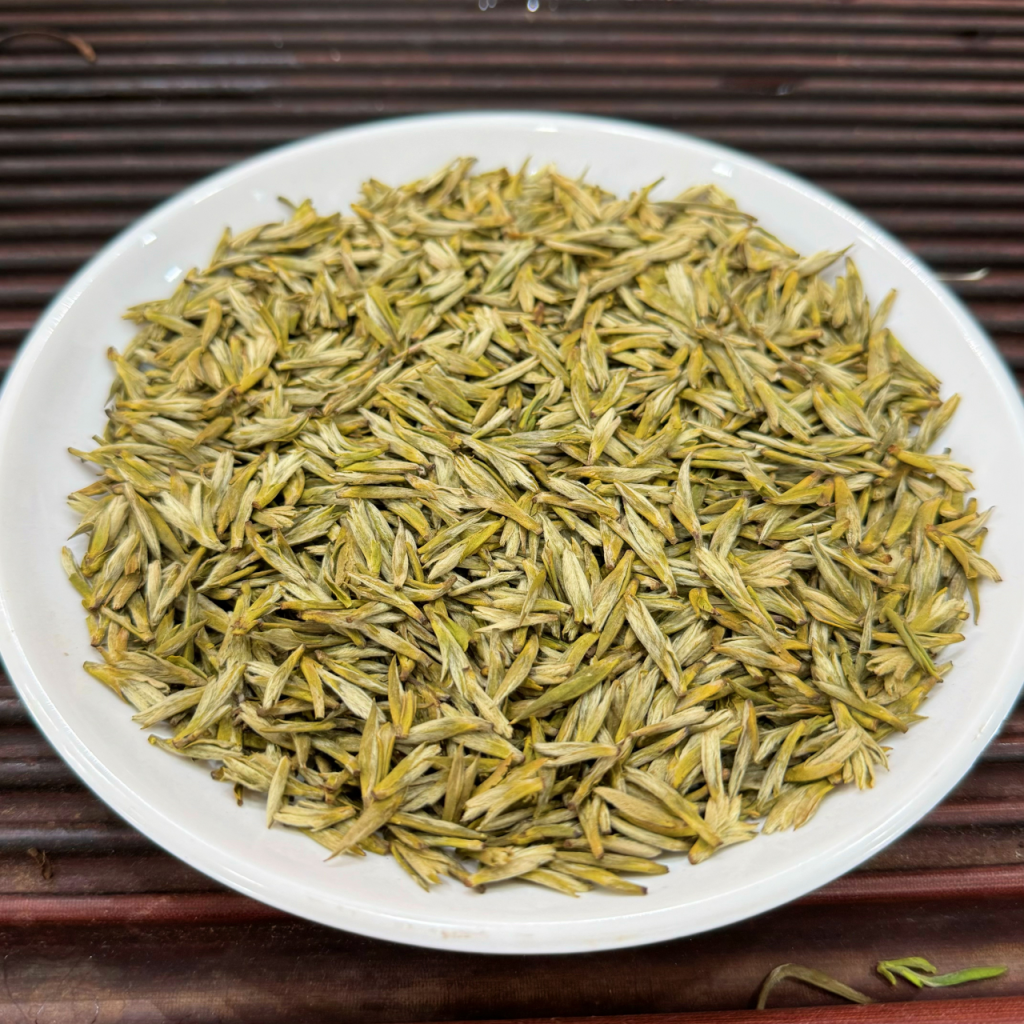Yellow tea, one of China’s six major tea categories, is renowned for its unique “yellow soup and yellow leaves” characteristic. This distinctive feature stems from its specialized processing techniques, particularly the “yellowing” step, which sets it apart from green tea. Below is a detailed classification of Chinese yellow tea based on different criteria:

I. Classification by Raw Material and Processing
1. Yellow Bud Tea (黄芽茶)
- Description: Made from single buds or one bud with one leaf, this category emphasizes tenderness and elegance.
- Representative Teas:
- Junshan Silver Needle (君山银针):
- Origin: Junshan Island, Dongting Lake, Yueyang, Hunan Province.
- Features: Known as “golden jade” for its silver-white down and golden hue. The tea buds float upright in water, offering a visually stunning experience.
- Mengding Yellow Bud (蒙顶黄芽):
- Origin: Mengding Mountain, Ya’an, Sichuan Province.
- Features: Flat and straight in shape with a tender yellow color. It has a sweet, mellow, and refreshing taste.
- Huoshan Yellow Bud (霍山黄芽):
- Origin: Huoshan County, Anhui Province.
- Features: Resembles sparrow tongues, with a fresh aroma and a lingering aftertaste.
- Junshan Silver Needle (君山银针):
2. Yellow Small Leaf Tea (黄小茶)
- Description: Made from one bud and two leaves, this category balances tenderness and flavor.
- Representative Teas:
- Weishan Maojian (沩山毛尖):
- Origin: Weishan, Ningxiang, Hunan Province.
- Features: Naturally curled like orchids, with a smoky aroma and a mellow, sweet taste.
- Beigang Maojian (北港毛尖):
- Origin: Beigang, Yueyang, Hunan Province.
- Features: Tightly rolled with golden down, offering a fragrant and thick taste.
- Pingyang Huangtang (平阳黄汤):
- Origin: Pingyang, Wenzhou, Zhejiang Province.
- Features: Known for its “three yellows”: yellow dry tea, yellow liquor, and yellow leaf bottom.
- Weishan Maojian (沩山毛尖):
3. Yellow Large Leaf Tea (黄大茶)
- Description: Made from mature leaves (one bud with three to five leaves), this category has a robust flavor.
- Representative Teas:
- Huoshan Huangda Cha (霍山黄大茶):
- Origin: Huoshan, Anhui Province.
- Features: Thick stems and leaves with a dark brown color. The tea has a strong, mellow taste and a high-fired aroma.
- Guangdong Dayeqing (广东大叶青):
- Origin: Guangdong Province.
- Features: Large, rolled leaves with a bright yellow-green color. The liquor is orange-yellow with a rich, refreshing taste.
- Huoshan Huangda Cha (霍山黄大茶):
II. Classification by Processing Techniques
The key step in yellow tea production is “yellowing”, which involves creating a hot, humid environment to oxidize polyphenols and chlorophyll, resulting in the tea’s yellow hue. This process can be categorized into:
- Wet-胚 Yellowing: Leaves with higher moisture content are yellowed for a shorter time (e.g., Weishan Maojian).
- Dry-胚 Yellowing: Leaves with lower moisture content are yellowed for a longer time (e.g., Huoshan Huangya).
III. Classification by Aroma and Taste
Yellow teas can also be categorized by their sensory profiles:
- Sweet and Mellow Style: Teas like Mengding Huangya and Junshan Yinzhen.
- Fresh and Clean Style: Teas like Huoshan Huangya.
- Aroma Types:
- Floral: Common in high-quality yellow teas.
- Chestnut: Found in Huoshan Huangya.
- Smoky: Characteristic of Weishan Maojian.
- Roasted: Prominent in Huoshan Huangda Cha.
IV. Geographical Distribution
Yellow tea is mainly produced in:
- Hunan Province: Famous for Junshan Yinzhen and Beigang Maojian.
- Anhui Province: Home to Huoshan Huangya and Huoshan Huangda Cha.
- Sichuan Province: Known for Mengding Huangya.
- Zhejiang Province: Produces Pingyang Huangtang.
- Guangdong Province: Specializes in Guangdong Dayeqing.
V. Cultural Significance and Market Status
Despite being one of China’s lesser-known tea categories, yellow tea holds historical and cultural value. For instance, Junshan Yinzhen was a tribute tea during the Tang Dynasty, while Huoshan Huangya was mentioned in historical records as early as the Western Han Dynasty. In recent years, yellow tea has seen a resurgence in popularity, with its unique flavor and health benefits gaining recognition.
In conclusion, Chinese yellow tea’s rich classification reflects its diverse origins, processing methods, and sensory characteristics, making it a fascinating and rewarding exploration for tea enthusiasts.



